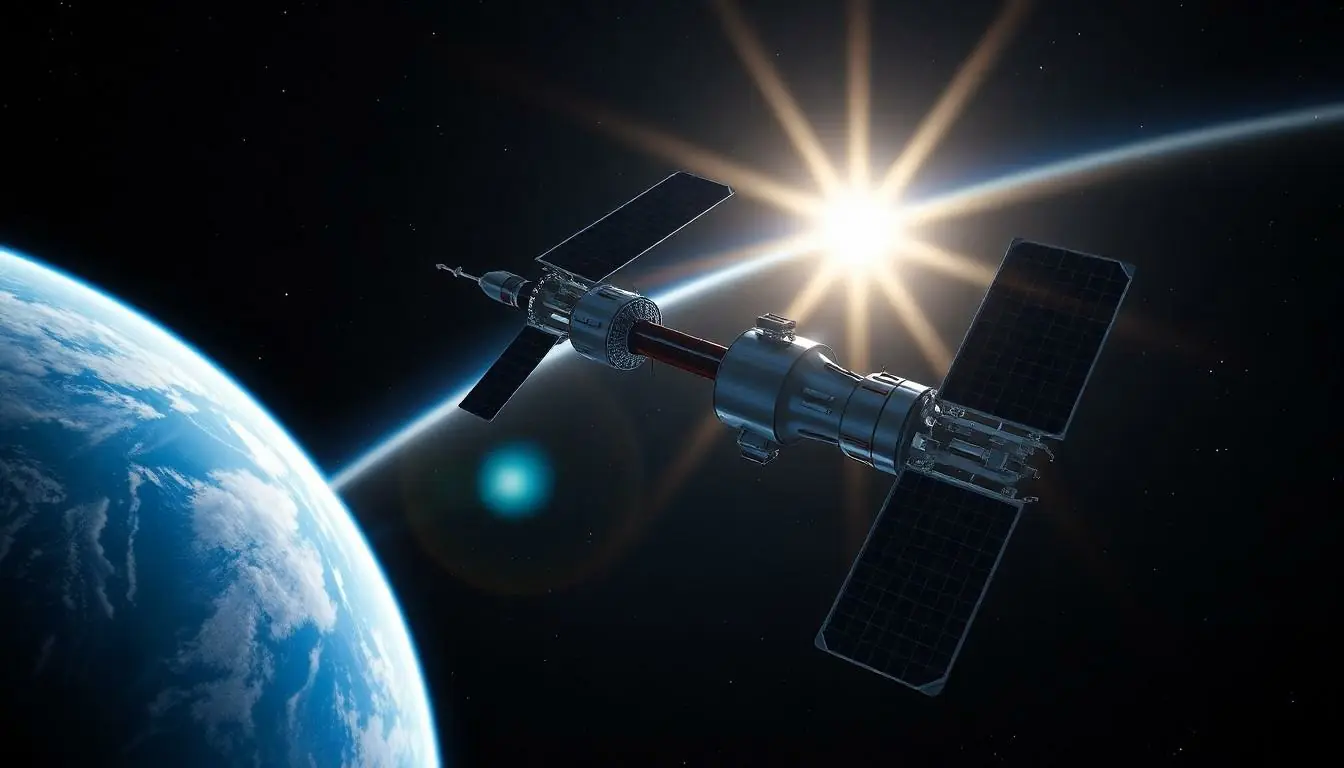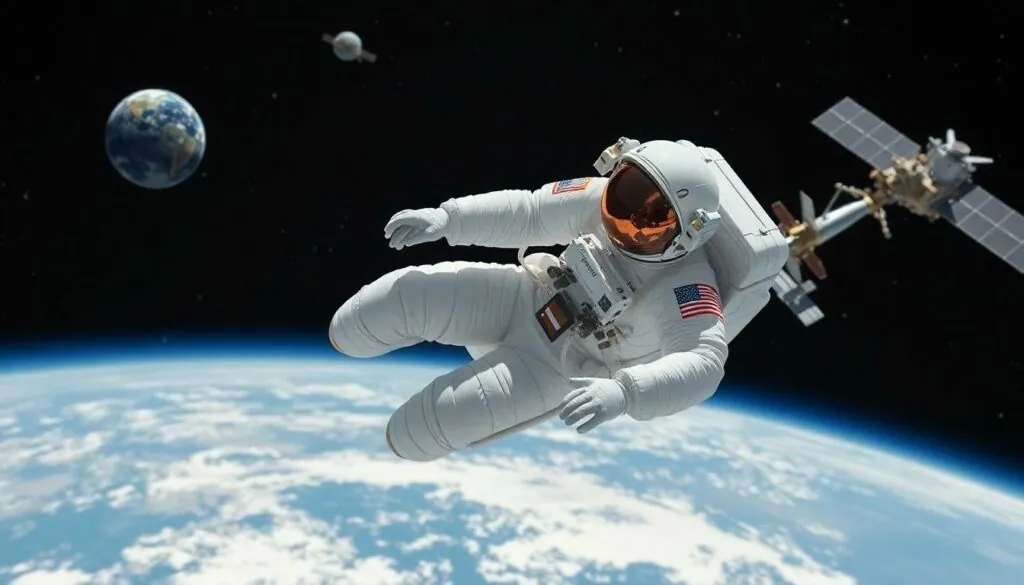Table of Contents
ToggleWhen you think of space, you might picture astronauts floating around in zero gravity or shiny rockets blasting off into the great unknown. But behind these thrilling visuals lies a treasure trove of innovative technology that’s not just for the stars; it’s changed life on Earth too.
Overview of Space Technology
Space technology encompasses specialized systems and devices designed for operation beyond Earth’s atmosphere. Many advancements in this field directly enhance satellite functionality, communications and scientific research. Innovations like the Hubble Space Telescope have revolutionized the understanding of galaxies and celestial phenomena. This telescope provides stunning images and valuable data, contributing significantly to astrophysics.
Adaptable to usage on Earth, space technology offers practical applications. For example, insulation materials developed for spacecraft help improve energy efficiency in homes. Similarly, advancements in robotics for Mars rovers streamline processes in various industries on Earth.
Satellite technology plays a crucial role in global communication. Global Positioning System (GPS) satellites enable accurate navigation, impacting daily life, transportation and logistics. Moreover, weather satellites enhance forecasting accuracy, allowing for better disaster preparedness.
In medicine, space technology yields impressive benefits. NASA’s research on exercise in microgravity has led to improved rehabilitation techniques for physical therapy. Imaging technology used in space missions now aids in early disease detection.
The collaboration between space agencies and private companies accelerates progress. Shared knowledge drives innovation, fostering a culture of continuous improvement in diverse fields. As space exploration advances, the development of technology will remain pivotal, bridging the gap between outer space and everyday applications.
Example One: Satellite Technology

Satellite technology plays a vital role in space exploration and communication. This technology has transformed various aspects of life on Earth, providing essential services in multiple sectors.
Development and Purpose
Satellite technology emerged to address the need for reliable communication beyond Earth’s atmosphere. Space agencies and private companies collaborated to design satellites that orbit the planet, collecting data and enabling global connectivity. These satellites intend to facilitate various applications, including weather forecasting, scientific research, and navigation systems. Over the decades, advancements in satellite technology have improved data transmission, leading to enhanced functionality and efficiency. Innovations like miniaturized components enable the creation of smaller, more cost-effective satellites, ensuring that many countries can access these technologies.
Impact on Communication
Satellite technology significantly impacts global communication networks. Direct satellite communication allows instant interactions across vast distances. Telecommunications providers utilize satellites for transmitting signals to remote areas without fiber-optic infrastructure. This technology supports essential services such as television broadcasting, internet connectivity, and GPS navigation. In addition, weather satellites improve forecasting accuracy, helping communities prepare for natural disasters. Satellite technology continues to enhance the way people communicate, ensuring timely information delivery and fostering global interconnectivity.
Example Two: Space Rovers
Space rovers exemplify remarkable technology developed for space exploration. These autonomous vehicles gather data and analyze the surface of other planets.
Design and Functionality
Design incorporates advanced robotics that allow rovers to navigate challenging terrains. Sensors, cameras, and scientific instruments enable precise measurements and data collection. Each rover features specialized wheels or tracks suitable for various landscapes, ensuring mobility across rocky surfaces and loose soils. Multiple systems work together for power, including solar panels and radioactive decay generators, thus ensuring long-term missions. Rovers like NASA’s Curiosity demonstrate capabilities to analyze Martian soil and atmosphere, enhancing scientists’ understanding of extraterrestrial environments.
Contributions to Planetary Exploration
Contributions to planetary exploration are profound. Rovers provide invaluable insights into geology, climate, and potential life on other planets. Data gathered enhances knowledge about Mars’ history, including its habitability. Valuable findings lead to advancements in planetary science and pave the way for future human missions. Rovers also serve as testbeds for technologies intended for manned missions, preparing for sustained human presence beyond Earth. These robotic pioneers continually reshape humanity’s relationship with the cosmos, offering a window into distant worlds.
Future of Space Technology
Emerging trends in space technology promise to reshape exploration and improve life on Earth. Innovations are underway in propulsion systems, such as ion propulsion technology, which enhances engine efficiency, allowing spacecraft to travel longer distances with less fuel. Spacecraft utilizing this technology can reach destinations like Mars faster and more efficiently.
Artificial intelligence is also playing a significant role in future space missions. AI-driven systems enhance data analysis, enabling spacecraft to make autonomous decisions during missions. For example, advanced algorithms can monitor spacecraft health in real-time, optimizing decision-making processes without human intervention.
Additionally, 3D printing technology is advancing in space environments. This method allows for on-demand production of tools and parts, reducing the need for carrying large inventories aboard spacecraft. As a result, astronauts can manufacture necessary components directly on missions, increasing mission efficiency.
Collaborative efforts between agencies, such as NASA and private companies, accelerate innovation in this sector. Ventures focusing on commercial space endeavors cultivate new technologies, paving the way for safer and more cost-effective exploration. Partnerships foster advancements in satellite technology, supporting global communication and navigation systems.
Moreover, advancements in human habitat technology are critical for long-duration space flights. Research aims to develop sustainable life support systems, incorporating renewable resources for air, water, and food. Living conditions on spacecraft are crucial, ensuring the health and comfort of astronauts during extended missions.
Innovations in space tourism reflect another layer of technological advancement. Companies developing suborbital flights expand opportunities for civilians to experience space firsthand, generating public interest in space exploration. The resulting demand spurs further investments in related technologies, highlighting the importance of continuous research and development in the field.
Space technology continues to shape both exploration and everyday life on Earth. Innovations like the Hubble Space Telescope and satellite communication systems have not only advanced our understanding of the universe but also enhanced global connectivity. As collaborations between space agencies and private companies grow, the potential for groundbreaking advancements in robotics, AI, and sustainable habitats becomes increasingly promising. These developments not only support missions beyond our planet but also offer practical solutions to challenges faced on Earth. The future of space technology holds exciting possibilities that will further bridge the gap between our world and the cosmos.




